Yesterday I said the Garden Tomb was on shaky ground when claiming to be the place where Jesus was crucified. Today we visited the Church of the Holy Sepulcher, the spot with a much better claim to being the real deal.
The day started with a return to the Garden of Gethsemane for the devotional that we were unable to do yesterday. The highlight was a talk given by the youngest member of our group; a 16-year-old-girl named Esa. She reflected on the hurt that Jesus must have felt when his trusted disciples failed him in this garden (they fell asleep rather than standing by his side during his final night on Earth) and how he felt betrayed when Peter denied him three times. Her point was that we have a duty to support those around us in time of need. It’s also our responsibility to be open with others when we are in need of help.
We visited the site of the Antonia Palace, built by Herod the Great and named by Herod for his Roman patron, Marc Anthony. The palace was destroyed in 70 CE along with the rest of Jerusalem by Hadrian (the wall guy). This is where, traditionally, it is believed that Jesus was brought for trial before Pontius Pilot. As usual, other places in Jerusalem are candidates for this role. And as always, the exact location is not important; it’s the remembrance of the event that counts.
This served as a starting point for walking the Via Dolorosa, the Sorrowful Way, or Way of Suffering. It’s the path that Jesus traveled to Calvary, carrying the cross, where he was crucified. There are 14 Stations of the Cross (the Gospels mention eight), commemorating events that occurred as he carried the cross.
The path today isn’t exactly the same as two thousand years ago. First, Hadrian covered over a portion of the original road that Jesus would have traversed, to create a raised street for shops and traffic. We were able to walk under the raised street and see Roman era remains, including a place where guards played the Game of Kings, a game of chance perhaps like the game Jesus’s guards played to distribute his clothing. Other sections have more recent buildings that block the straight-line path. And of course, the narrow street is filled with fellow pilgrims and the streets are lined with food stalls and souvenir shops of every description.
All these impediments, especially the shops and their insistent vendors, detract from one’s ability to contemplate Jesus’s suffering and eventual crucifixion. On the other hand, the importance of the Via Dolorosa to Christians means that many are attracted to the site. And where there are tourists, there are inevitably souvenir shops. So, it’s perhaps selfishness to wish that everyone else would stay home. Like the uncertainty of the location of historical sites, it’s the pilgrim’s responsibility to rise above the distraction and to contemplate the meaning of the events.
The end of the Via Dolorosa is the Church of the Holy Sepulcher. The church encompasses two sites of highest importance to Christianity. First Calvary, the place where Christ was crucified, according to tradition going back to the fourth century CE. It’s also known as Golgotha (skull). Nearby there is a stone slab on which it is believed Christ’s body was placed and anointed with oils and spices. His body was then placed in a tomb provided by Joseph of Arimathea. It was at the tomb that Mary Magdalene encountered the risen Christ.
The church was established by Constantine the Great. After Constantine had legalizing Christianity, he sent his mother to Jerusalem to find the place where Christ was crucified. She, with the help of local bishops, found three wooden crosses, which convinced them 1. To build a church here, a Roman temple to the god Jupiter/Venus, built by Hadrian 200 years or so earlier, had to be torn down. In the process they discovered a tomb, assumed to be Christ’s burial chamber. The church has been destroyed and rebuilt over the years, including a fire set in 614 CE by the Persians, and several earthquakes. The tomb, actually a cave with three burial spots, is today enclosed in a structure called the Aedicula, built in the 19th century.
I was somewhat surprised to see how close together Calgary and the tomb are – sites easily included in a single church. The site lies outside the walls of Jerusalem, as they existed at the time of Christ and is in a first-century graveyard. The line to see Jesus’s tomb was so long so we entered a different tomb from the same era only a few feet away.
Our day ended on the Teaching Steps, a long series of steps leading to the area where the Second Temple would have stood. This is the temple where Jesus is believed to have taught his elders when he visited Jerusalem when he was only 12 years old and where, during his ministry, he castigated the money lenders. We had a devotional there before Pastor Charlie and out guides declared the pilgrimage to be officially complete.
One surprise in the Old City, and throughout Israel for that matter, is the abundance of fresh fruit and vegetables. That was quite evident during our walk today with produce stands intermixed with t-shirt and souvenir shops. We shot a number of pictures to illustrate Old City commerce.
Our trip home went as planned. No hitches, an on-time arrival and we were at our home in Melrose by 6:30 AM. Rebecca and her kids Esme and Griffin were there to greet us. I’m typing this final paragraph in the sunroom with Doby the grand-dog at my feet.
It’s good after 40 days on the road, to be home.













































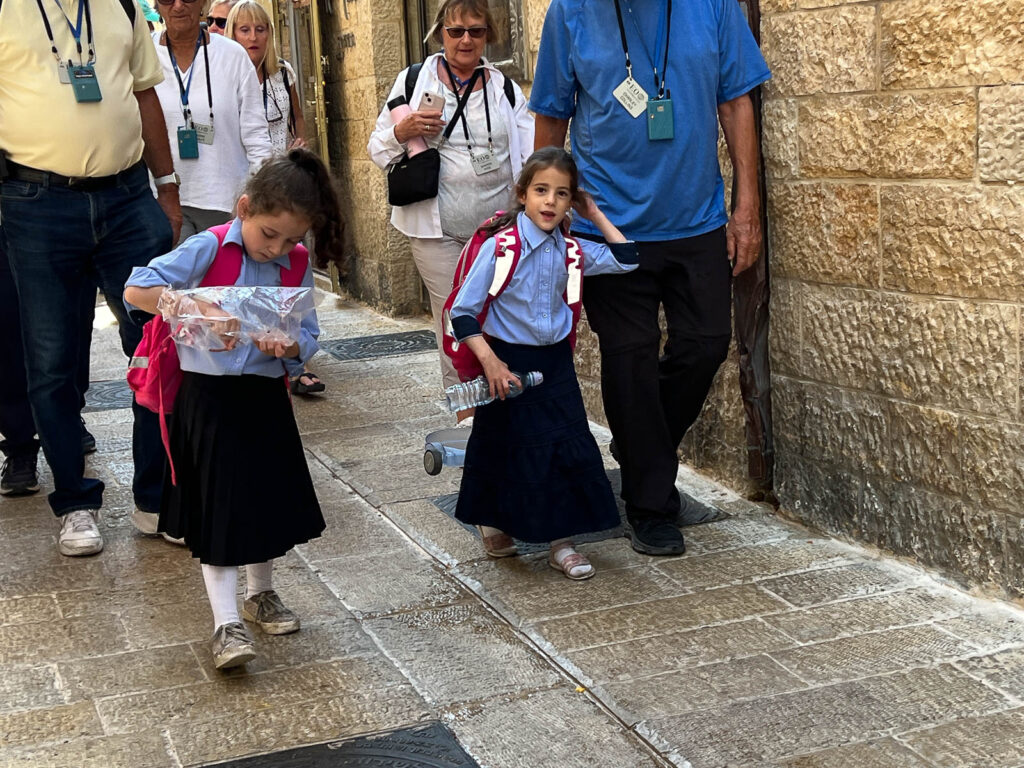






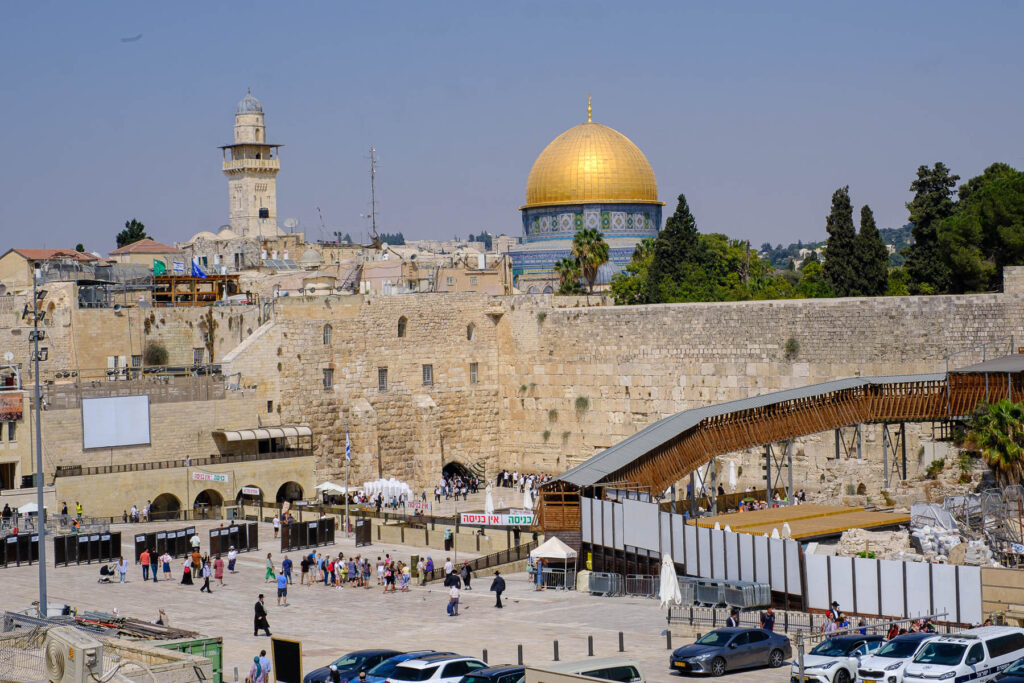
















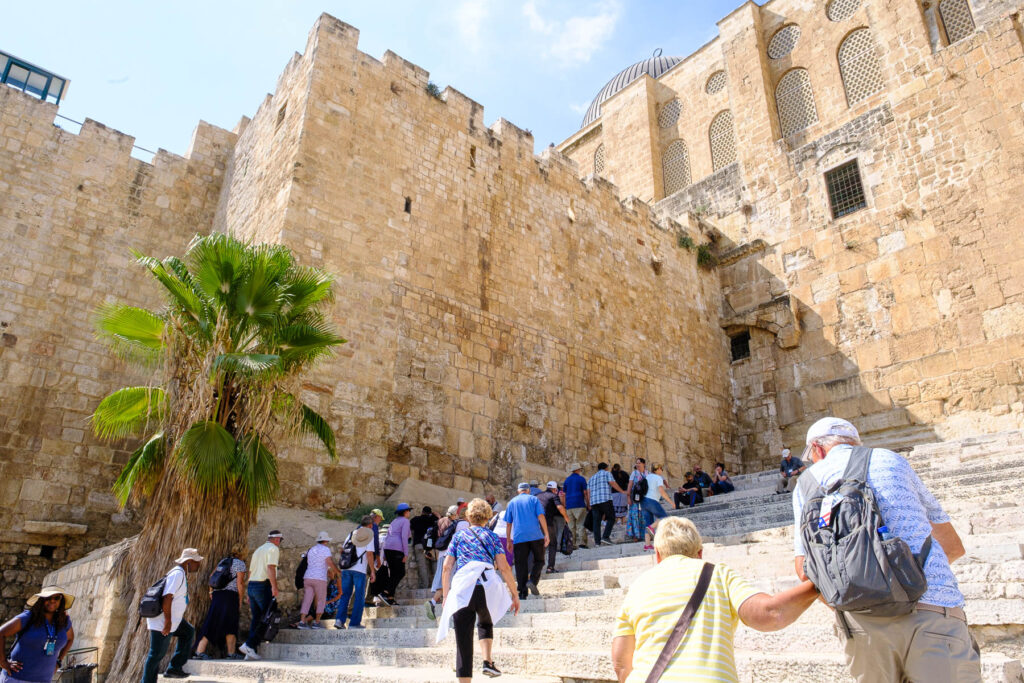

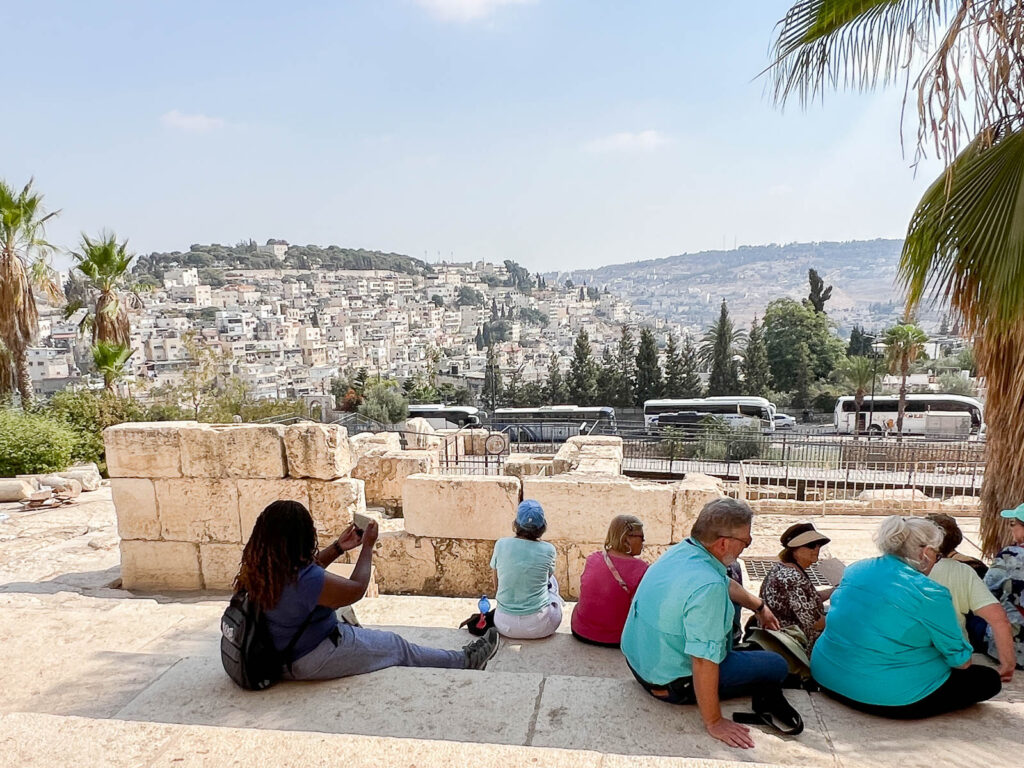



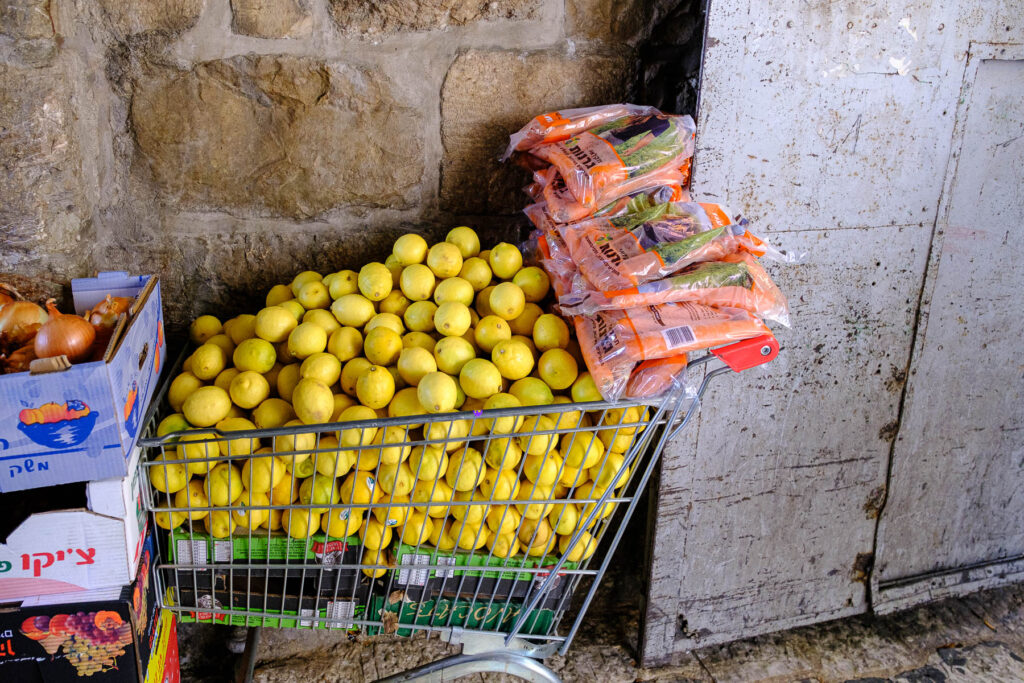



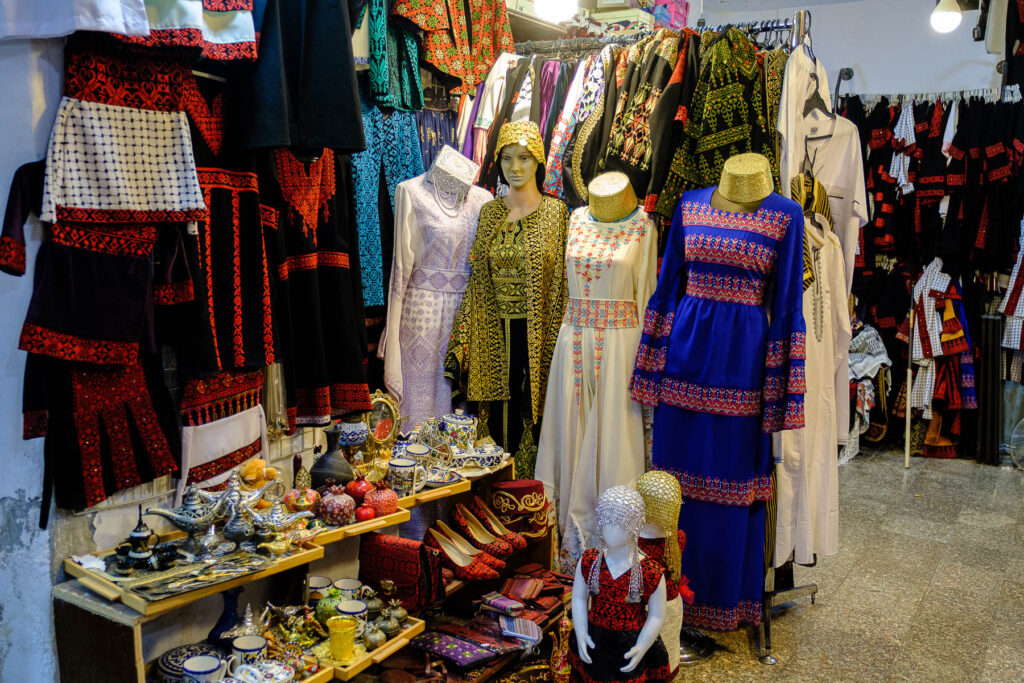





Hi, welcome back to your wonderful family.
Thank you for a great interesting reporting from the few countries, you have
explored this time. As always very good pictures.
Hugs
Thanks, Hala. Good to be home!